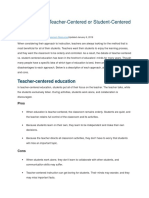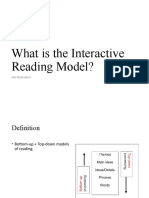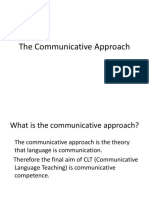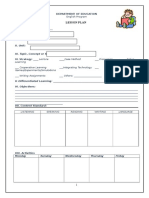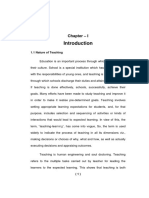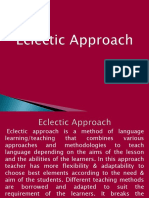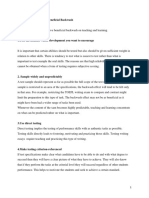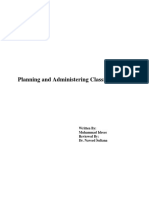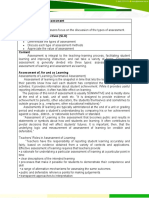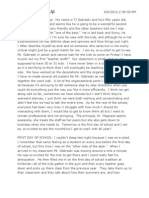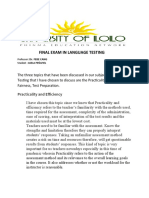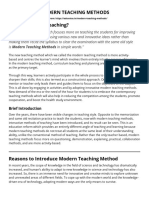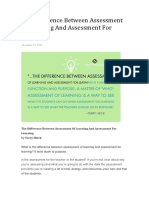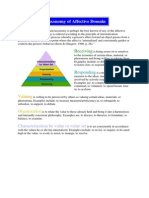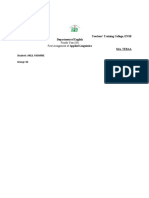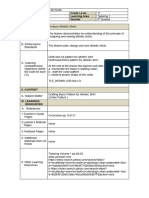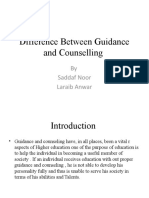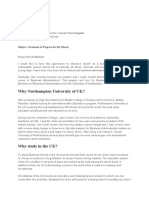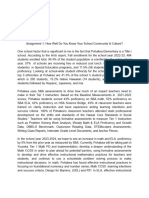0% found this document useful (0 votes)
855 views10 pagesI. Definition of Test Design
The document discusses the background and purposes of test design in educational settings. It notes that over the last 15 years, standardized tests have increasingly been used for accountability purposes to make decisions about students, schools, and funding. Tests are typically designed to provide diagnostic information, evaluate student progress, or evaluate educational programs. The document then discusses key concepts in test design, including defining objectives, developing test items, pretesting items, and ensuring tests are fair and functioning properly. Finally, it outlines some strategies for designing assessments, such as structured interviews, situational judgment tests, and role plays, to promote 21st century learning skills.
Uploaded by
Aklil YasmineCopyright
© © All Rights Reserved
We take content rights seriously. If you suspect this is your content, claim it here.
Available Formats
Download as DOCX, PDF, TXT or read online on Scribd
0% found this document useful (0 votes)
855 views10 pagesI. Definition of Test Design
The document discusses the background and purposes of test design in educational settings. It notes that over the last 15 years, standardized tests have increasingly been used for accountability purposes to make decisions about students, schools, and funding. Tests are typically designed to provide diagnostic information, evaluate student progress, or evaluate educational programs. The document then discusses key concepts in test design, including defining objectives, developing test items, pretesting items, and ensuring tests are fair and functioning properly. Finally, it outlines some strategies for designing assessments, such as structured interviews, situational judgment tests, and role plays, to promote 21st century learning skills.
Uploaded by
Aklil YasmineCopyright
© © All Rights Reserved
We take content rights seriously. If you suspect this is your content, claim it here.
Available Formats
Download as DOCX, PDF, TXT or read online on Scribd
/ 10
